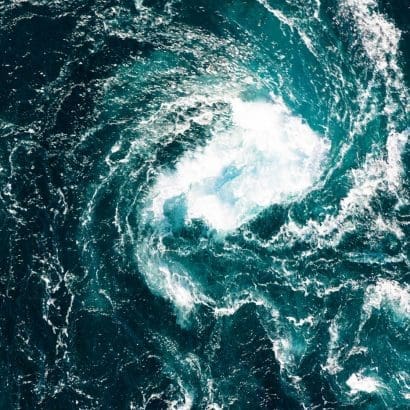
Picture a bustling underwater world, where marine life dances through the ocean currents, each species playing a unique role in the delicate harmony of the seas. Yet, beneath this shimmering surface, a quiet threat looms—one that often goes unnoticed but leaves a lasting mark on our oceans. Today, we embark on a journey to unravel the mysteries of trawling, a fishing method with consequences that extend far beyond the catch it seeks.
Trawling, like casting a vast net across the sea, is a method used by fishermen to capture fish and other creatures beneath the waves. However, the repercussions of this seemingly simple practice are complex and, at times, devastating for the underwater world we admire. In this exploration, we will uncover the environmental consequences of trawling, understanding how its impact reverberates through the very fabric of ocean ecosystems.
Contents
Unveiling the Underwater Impact.🐟
When envisioning fishing, the idyllic image of a boat, a fishing rod, and a peaceful afternoon by the water often comes to mind. Yet, beneath the surface, there exists a less tranquil reality, especially when exploring the method known as trawling—a fishing technique that unfolds its consequences below the waves, entwining both the sought-after and the unintended in its net.
Unintended Catch.
In the realm of trawling, the process of dragging a net through the water to capture marine life unfolds like an underwater ballet. However, the elegance of this dance is disrupted by an unintended consequence—bycatch. Imagine aiming for specific fish, yet, as you pull the net, it inadvertently captures a multitude of other sea creatures. This unintentional capture, analogous to how a whirlpool forms beneath the waves, creates a ripple effect in the marine world, unintentionally altering the underwater landscape.
Depletion of Marine Life.
To comprehend the true impact, consider the ocean as a vast orchestra, with each marine species playing a unique instrument. Trawling, however, disrupts this harmonious symphony. It’s like introducing a rogue dancer who doesn’t follow the rhythm, throwing off the entire performance. The consequences of trawling extend beyond the initial catch, affecting non-target species and disrupting their natural habitats and survival strategies.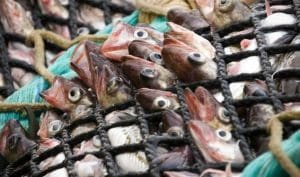
Habitat Destruction and Bottom Trawling.🐟
Welcome to the mysterious world beneath the waves, where Little Known Underwater Wonders await discovery. As we dive deeper into the environmental consequences of trawling, one of the most concerning chapters unfolds—the impact on seafloor habitats, a realm often overlooked but teeming with life.
Little Known Underwater Wonders.
Beneath the surface, hidden from casual observers, lie the Little Known Underwater Wonders—coral reefs, benthic communities, and an array of marine life thriving in delicate balance. Yet, the quiet dance of these wonders is disrupted by a fishing practice that extends its reach to the ocean floor—bottom trawling.
Unveiling the Impact.
Imagine dragging heavy gear along the ocean floor, akin to plowing a field but in an underwater landscape. This is the essence of bottom trawling, a method with consequences that reverberate through the very foundations of the ocean. As the gear sweeps across the seafloor, it leaves destruction in its wake, impacting essential habitats like coral reefs and benthic communities.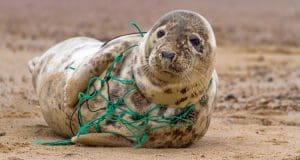
Coral Reefs and Benthic Communities.
Coral reefs, vibrant and bustling cities beneath the waves, provide shelter and sustenance to a myriad of marine creatures. However, the heavy drag of trawling gear can crush these delicate structures, turning vibrant coral gardens into barren landscapes. It’s like bulldozing a thriving city, leaving behind ruins instead of life.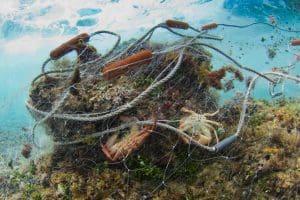
Benthic communities, the unsung heroes of the ocean floor, are equally affected. Trawling disrupts the intricate balance they maintain, much like toppling a stack of carefully arranged building blocks. This disturbance has a domino effect, impacting not only the directly affected areas but also the interconnected web of marine life.
Habitat Disruption and Its Consequences.
Habitat disruption is not just about physical destruction; it’s a ripple effect that touches every corner of underwater life. Picture it as a stone thrown into a pond—the waves reach far beyond the point of impact. Countless species, from the tiniest sea creatures to majestic marine dwellers, rely on these habitats for survival.
The Domino Effect of Trawling.🐟
As we continue our journey into the depths of understanding the environmental consequences of trawling, we come face to face with a critical aspect—Altered Ecosystem Dynamics. It’s not just about catching fish; it’s about reshaping the intricate dance of life beneath the waves.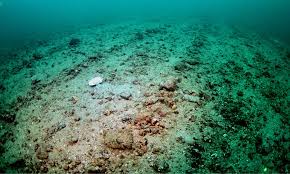
Unraveling Ecosystem Harmony
Imagine an ecosystem as a giant tower of interconnected blocks, each representing a different species. Trawling, however, acts like a force that selectively removes specific blocks. This removal might seem isolated, but it sets off a domino effect—a chain reaction that ripples through the entire tower.
Trawling’s Impact on Marine Abundance.
In a healthy ecosystem, every species plays a unique role, much like players in a team contributing to the success of the game. Trawling disrupts this natural harmony by selectively targeting certain species. It’s akin to removing key players from the team, leading to a shift in strategies and impacting the overall game.
The Food Web Puzzle.
Now, let’s imagine the ecosystem as a complex jigsaw puzzle, where each species is a crucial piece. Trawling doesn’t just remove pieces—it reshapes the puzzle. The selective removal of certain species creates gaps in the puzzle, affecting the intricate connections within the food web.
This alteration in the food web can lead to imbalances that are challenging to rectify. It’s like trying to rebuild a puzzle with missing pieces; the picture is forever changed. The predators that relied on the removed species may struggle to find food, while the prey species left unchecked might experience population explosions, further disrupting the delicate equilibrium.
Seeking Balance in Ecosystems.
The repercussions of altered ecosystem dynamics extend far beyond the initial catch. The imbalances created by trawling pose challenges for the entire community of marine life. The consequences echo through the underwater realms, emphasizing the need for a thoughtful and sustainable approach to fishing.
Lessons from Native Cultural Fishing Techniques.
As we navigate these altered dynamics, it’s essential to explore alternative methods, such as Native Cultural Fishing Techniques. Indigenous practices often prioritize harmony with nature, demonstrating a deep understanding of ecosystems. Learning from these time-tested techniques may offer valuable insights into sustainable fishing practices that preserve the delicate dance of life beneath the waves.
Collateral Damage.🐟
In the mesmerizing world beneath the waves, where marine life orchestrates a delicate dance, there exists an often overlooked chapter—Collateral Damage. Beyond the immediate catch, trawling unveils broader environmental consequences that ripple through the oceans, impacting both the creatures below and the world above.
Unseen Consequences.
When we think of trawling, the first image that comes to mind is a net full of fish. However, the story doesn’t end there. The collateral damage of trawling extends beyond the direct impact on marine life, reaching into the very fabric of our environment.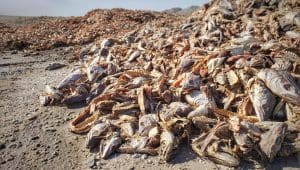
Carbon Emissions and Climate Change.
Trawling vessels, with their hunger for the sea’s bounty, come at a cost that goes beyond the ocean’s edge. The fuel-intensive nature of these vessels churns out carbon emissions, contributing to the ongoing challenge of climate change. It’s like adding more logs to an already blazing fire, intensifying the environmental consequences of our fishing practices.
Sediment Resuspension and Water Quality.
The physical act of trawling isn’t just about catching fish—it’s about stirring up the ocean floor. This disturbance doesn’t stop at the seabed; it has a lasting impact on the water quality and the delicate balance of marine ecosystems. The process of trawling can lead to sediment resuspension, creating murky waters and disrupting the homes of countless underwater species.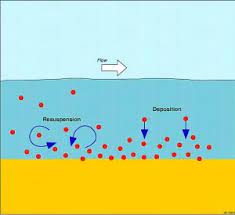
Preserving Our Oceans.
As we uncover the hidden costs of trawling, it becomes clear that a more sustainable approach is not only desirable but essential. Exploring and adopting alternative fishing methods that prioritize environmental conservation is crucial for the well-being of our oceans and the diverse life they harbor.
Popular Queries on the Topic.🐟
How does trawling affect marine life?
Trawling, a fishing method involving dragging a net through the water, has profound effects on marine life. The impact extends beyond the targeted species and their habitats. The indiscriminate nature of trawling leads to significant collateral damage. Non-target species, including juvenile fish, marine mammals, and other unintended marine life, are often caught in the nets, a phenomenon known as bycatch. This unintentional capture disrupts ecosystems, depleting various marine populations and compromising the delicate balance within underwater environments.
Are there sustainable alternatives to trawling?
Yes, there are sustainable alternatives to trawling that prioritize environmental conservation and reduce the ecological impact on marine ecosystems. One notable alternative is pole and line fishing, a method where a single fishing line with baited hooks is used, allowing for precise targeting of specific species and minimizing bycatch. Another sustainable approach is the use of fish traps or pots, which reduce the impact on the seafloor and allow for the release of non-target species.
What regulations exist to mitigate the environmental impact of trawling?
Governments and international organizations recognize the need for regulations to mitigate the environmental impact of trawling. Various measures are in place to address the challenges associated with this fishing method. Some key regulations include:

